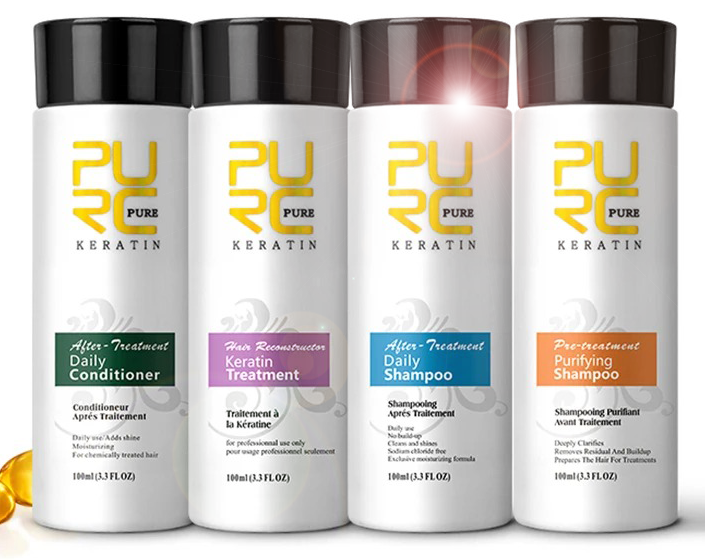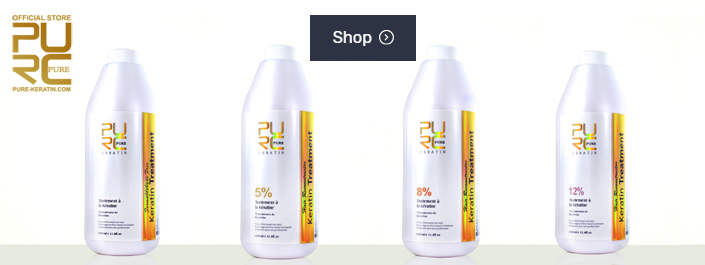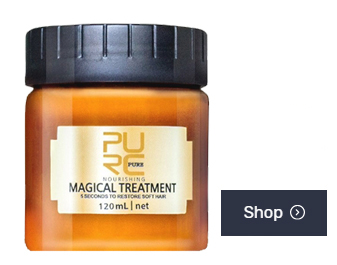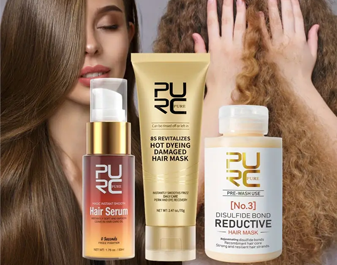Keratin Treatment for Split Ends
KERATIN TREATMENT on 10th Jun 2024
- Introduction
- What are split ends?
- Brief overview of keratin treatment
- Understanding Split Ends
- Causes of split ends
- Common misconceptions
- What is Keratin?
- Natural keratin in hair
- Benefits of keratin
- Keratin Treatment Explained
- Process of keratin treatment
- Different types of keratin treatments
- How Keratin Treatment Helps Split Ends
- Mechanism of action
- Immediate and long-term benefits
- Pre-Treatment Preparation
- Assessing hair condition
- Choosing the right salon and products
- Step-by-Step Keratin Treatment Process
- Detailed process description
- What to expect during the treatment
- Post-Treatment Care
- Dos and don’ts after keratin treatment
- Recommended hair care products
- Expected Results and Duration
- Immediate results
- How long the treatment lasts
- Pros and Cons of Keratin Treatment
- Advantages
- Potential drawbacks
- Alternative Treatments for Split Ends
- Regular trims
- Deep conditioning treatments
- DIY home remedies
- Choosing the Right Treatment for Your Hair Type
- Fine vs. thick hair considerations
- Colored or chemically treated hair
- Cost of Keratin Treatment
- Average pricing
- Factors affecting cost
- FAQs about Keratin Treatment for Split Ends
- Can keratin treatment damage hair?
- Is keratin treatment safe for all hair types?
- How often should you get a keratin treatment?
- Can you do keratin treatment at home?
- What are the signs of a good keratin treatment?
- Conclusion
- Summary of key points
- Final thoughts on keratin treatment for split ends
Keratin Treatment for Split Ends
Introduction
Split ends are every hair enthusiast’s nightmare. Those pesky little ends that fray and split not only ruin the look of your hair but can also signal deeper issues with hair health. But don't worry, there’s a popular solution making waves in the haircare world—keratin treatment. Let’s dive into how this treatment can help banish split ends for good.
Understanding Split Ends
Split ends, technically known as trichoptilosis, occur when the protective outer layer of the hair cuticle wears away because of external stressors like heat styling, chemical treatments, or environmental conditions. When the cuticle is damaged, the inner core of the hair is exposed, leading to frayed and split ends.
Causes of Split Ends
- Heat Styling: Frequent use of blow dryers, straighteners, and curling irons can cause significant damage.
- Chemical Treatments: Hair dyes, perms, and relaxers can weaken hair.
- Environmental Factors: Sun exposure, wind, and pollution contribute to the wear and tear of hair.
- Mechanical Stress: Rough handling of hair, like aggressive brushing or towel drying, can lead to split ends.
Common Misconceptions
- Myth: Only dry hair gets split ends.
- Fact: Any hair type can develop split ends if not cared for properly.
What is Keratin?
Keratin is a fibrous protein that makes up the structure of our hair, skin, and nails. In hair, keratin is responsible for strength and resilience.
Natural Keratin in Hair
Hair is composed of about 95% keratin, which forms both the interior cortex and the outer protective cuticle.
Benefits of Keratin
- Strengthens hair: Adds a protective layer to hair strands.
- Reduces frizz: Smooths the hair cuticle, making hair look shiny.
- Improves elasticity: Makes hair more resistant to breakage.
Keratin Treatment Explained
Keratin treatments are salon procedures that infuse hair with artificial keratin. This can help repair damage and smooth the hair.
Process of Keratin Treatment
- Application: A keratin solution is applied to clean, dry hair.
- Heat Activation: Hair is blow-dried and then flat-ironed to seal the keratin.
- Rinse and Blow-Dry: After the solution has set, hair is rinsed and styled.
Different Types of Keratin Treatments
- Brazilian Keratin Treatment: Known for reducing frizz and making hair more manageable.
- Soft Keratin Treatment: A gentler version for fine or fragile hair.
How Keratin Treatment Helps Split Ends
Mechanism of Action
Keratin treatment works by filling in the gaps in the hair cuticle, effectively "gluing" split ends back together and providing a smooth, unified hair shaft.
Immediate and Long-Term Benefits
- Immediate: Hair looks healthier and shinier right after the treatment.
- Long-Term: With proper care, the treatment can keep hair split-free for months.
Pre-Treatment Preparation
Assessing Hair Condition
Evaluate your hair’s current state. Extremely damaged hair might need restorative treatments before a keratin session.
Choosing the Right Salon and Products
Opt for reputable salons and high-quality keratin products to avoid potential damage from harsh chemicals.
Step-by-Step Keratin Treatment Process
- Consultation: Discuss your hair concerns and desired outcomes with your stylist.
- Hair Cleansing: Hair is washed with a clarifying shampoo to remove residue.
- Keratin Application: The keratin solution is applied evenly to the hair.
- Heat Processing: Hair is blow-dried and flat-ironed to activate the keratin.
- Rinse and Style: After the solution has set, hair is rinsed, blow-dried, and styled.
Post-Treatment Care
Dos and Don’ts after Keratin Treatment
- Do: Use sulfate-free shampoos and conditioners.
- Don’t: Wash your hair for at least 48 hours post-treatment.
Recommended Hair Care Products
Invest in keratin-infused shampoos, conditioners, and serums to prolong the treatment effects.
Expected Results and Duration
Immediate Results
Expect smoother, shinier, and more manageable hair immediately after the treatment.
How Long the Treatment Lasts
Typically, results last 3-6 months, depending on your hair care routine and product choices.
Pros and Cons of Keratin Treatment
Advantages
- Reduces Frizz: Makes hair smooth and shiny.
- Strengthens Hair: Reduces breakage and split ends.
- Low Maintenance: Cuts down on daily styling time.
Potential Drawbacks
- Cost: Can be expensive.
- Maintenance: Requires specific products and routines.
- Chemical Exposure: Some treatments contain formaldehyde or other chemicals.
Alternative Treatments for Split Ends
Regular Trims
Trimming your hair every 6-8 weeks helps prevent split ends from progressing.
Deep Conditioning Treatments
Regular deep conditioning can help keep hair hydrated and less prone to splitting.
DIY Home Remedies
- Coconut Oil: Apply to ends to nourish and protect.
- Egg Mask: Strengthens hair with protein.
- Honey and Olive Oil: Moisturizes and repairs damage.
Choosing the Right Treatment for Your Hair Type
Fine vs. Thick Hair Considerations
- Fine Hair: Opt for a lighter keratin treatment to avoid weighing down hair.
- Thick Hair: A stronger treatment can help manage volume and frizz.
Colored or Chemically Treated Hair
Special care is needed to avoid additional damage. Consult your stylist for the best approach.
Cost of Keratin Treatment
Average Pricing
Expect to pay between $150 to $400, depending on the salon and your hair length.
Factors Affecting Cost
- Location: Urban salons typically charge more.
- Hair Length and Thickness: More product and time can increase cost.
- Type of Treatment: Different formulations and brands vary in price.
FAQs about Keratin Treatment for Split Ends
Can keratin treatment damage hair?
If done improperly or too frequently, keratin treatments can weaken hair. Always go to a reputable salon.
Is keratin treatment safe for all hair types?
Generally, yes. However, those with very fine or heavily damaged hair should consult with a stylist.
How often should you get a keratin treatment?
Typically every 3-6 months. Overdoing it can lead to damage.
Can you do keratin treatment at home?
Yes, there are at-home kits, but professional treatments tend to yield better results and are safer.
What are the signs of a good keratin treatment?
Shiny, smooth, and frizz-free hair that remains manageable for several months.
Conclusion
Keratin treatments offer a promising solution for managing and eliminating split ends. They work by infusing hair with much-needed protein, sealing the cuticle, and providing a protective layer that helps prevent further damage. While the treatment has its pros and cons, when done correctly, it can transform your hair, making it smoother, shinier, and healthier-looking. Remember to follow pre and post-treatment care instructions to maximize the benefits and maintain the results for as long as possible.
FAQs
- Can keratin treatment damage hair?
- If not done correctly, it can cause some damage, so it's crucial to choose a reputable salon and experienced stylist.
- Is keratin treatment safe for all hair types?
- Yes, but it's best to consult with a stylist, especially if you have fine or heavily damaged hair.
- How often should you get a keratin treatment?
- Every 3-6 months is recommended to avoid overprocessing.
- Can you do keratin treatment at home?
- While at-home kits are available, professional treatments tend to be more effective and safer.
- What are the signs of a good keratin treatment?
- Your hair should be shiny, smooth, frizz-free, and manageable for several months after the treatment.



















